One Saturday evening last October, I made my way to Bloc nightclub in east London’s Hackney Wick, an area home to factories, artist’s studios, the 2012 Olympic Stadium, and grotty warehouse raves. The occasion was Chapter 10, a recurring gay night that champions techno, house, and disco where Honey Dijon was set to headline. However, many people, myself included, had arrived early to catch a performance by Young Boy Dancing Group—a collective of contemporary dancers from across Europe whose performances are a mishmash of queerness and techno-futurism that could only exist in our digital age.
Upon entering the venue’s main room, it felt like some sort of Wiccan ritual was going on: candles marked out a large circle in the center of the dancefloor. A male performer with a jockstrap in the center of his face, a blonde woman with weave tracks repurposed as a belt, and other performers in bondage-y short shorts grazed through the space slowly. They waved metal amulets reminiscent of clergymen’s incense burners in the air to a chant-heavy tune from the Ghost in the Shell soundtrack, before crawling all over each other in what looked like a refined game of Twister.
Videos by VICE
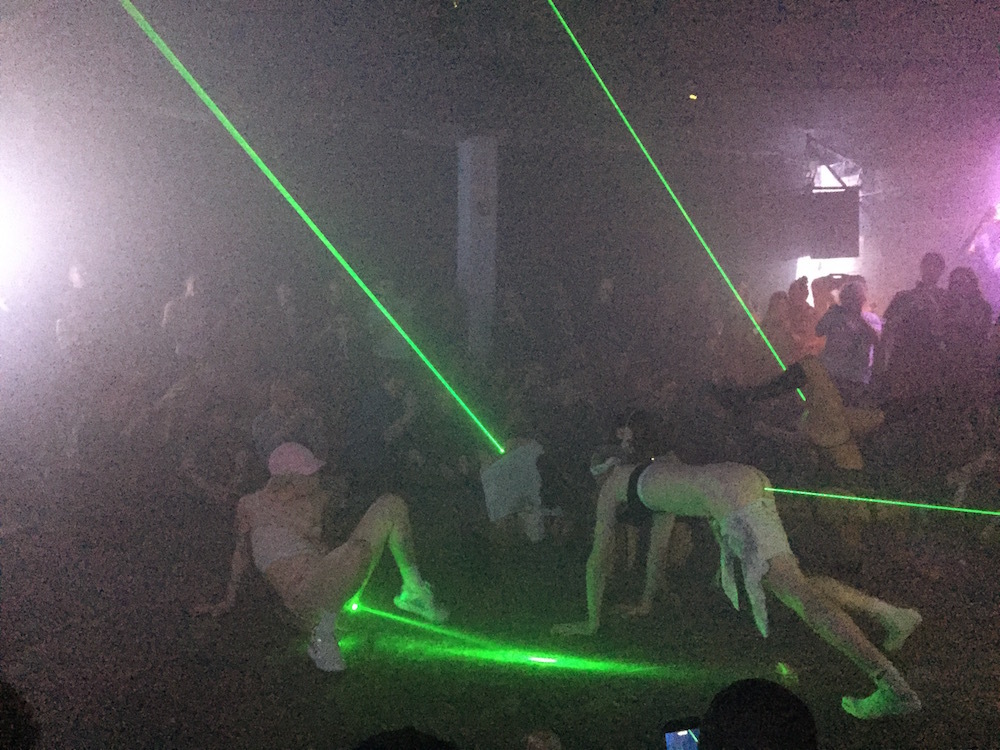
Young Boy Dancing Group at Chapter 10 (Photo by the author)
Then, they scurried off to various corners of the room, and each inserted a green laser into their anuses. The performance quickly became total mayhem, with group members flailing wildly, creating a mosh pit, and running amok to a pitched-down, jittery dance remix of Enya’s “Only Time.”
A History of the Laser in Dance Music
Young Boy Dancing Group don’t only perform in a nightclub context, though. Their performance that night coincided with Frieze Art Fair, and since 2014, they’ve put on several shows in art world settings, including the Lithuanian Pavilion at the Venice Biennale, Manifesta: The European Biennial of Contemporary Art in Zurich, Arti et Amicitiae in Amsterdam, and MAMA in Rotterdam.
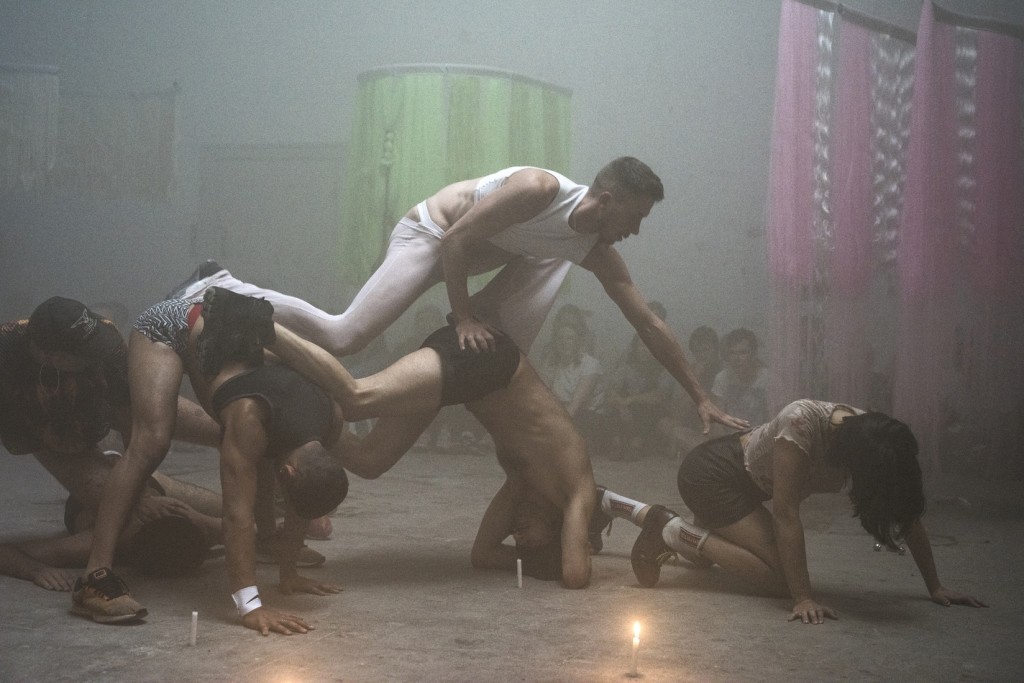
Young Boy Dancing Group at The Curves in the World”, Copenhagen, 2016 (Photo by David Stjernholm)
Prancing around art galleries with a laser in your butt could be seen as silly, or a cheap gimmick to demand viewers’ attention. However, curator Mette Woller—who included Young Boy Dancing Group in an exhibition called “The Curves of the World” at Chart Art Fair in Copenhagen late last summer—explained to me that this seemingly outré act is deliberate. “They challenge notions of gender and sexuality and constantly question institutionalized settings,” she asserts. “It makes you either cry or get offended.”
To find out more about the concepts of queerness and sexuality behind Young Boy Dancing Group’s work, I recently spoke to one of the group’s co-founders, the Swiss-born Manuel Scheiwiller, who was “escaping the winter” on a jaunt to Puerto Rico and Cuba at the time. Check YBDG’s Facebook page for upcoming performances, because trust me, you haven’t lived until you’ve seen fluorescent laser light refracted in a million different directions off of a disco ball, the source of which is some dude’s asshole.
THUMP: Do most of Young Boy Dancing Group’s members have formal dance training? And, is there a core set of members?
Manuel Scheiwiller: Yes. Actually, most people met in the dance academies around Amsterdam. I studied dance in Rotterdam and Amsterdam and then visual arts in Vienna and Stuttgart. The funny thing about the group is that they are from everywhere: Croatia, Estonia, Holland, Germany. But actually, Young Boy Dancing Group is not really a fixed group, we try to keep it very [fluid]. There’s a core of like five people organizing gigs and doing things. And then there’s, in total, like 15 people that we’ll work with. The key thing is that we’re friends, but since all of us have quite similar aesthetic approaches and interests, the work connects. The whole show works like a pool for people to drop in, and then you might work with someone on their own project. There’s always overlap.
Do you feel like there is a central idea you’re trying to convey? Or, is it more playful and experimental?
There are certain topics that are absolutely present. One is, for sure, queer. Other ones are dance, movement, body, and of course sexuality. I don’t know if you saw it in London, but [one of our members] Nico inserted a dildo. There’s this thing of sexuality—in Paris, we held a make out workshop. We asked the whole audience to hold hands and make out with each other. Some of them did it. Actually, it worked when we did it in Zurich. It was much better. Everybody was so into each other.
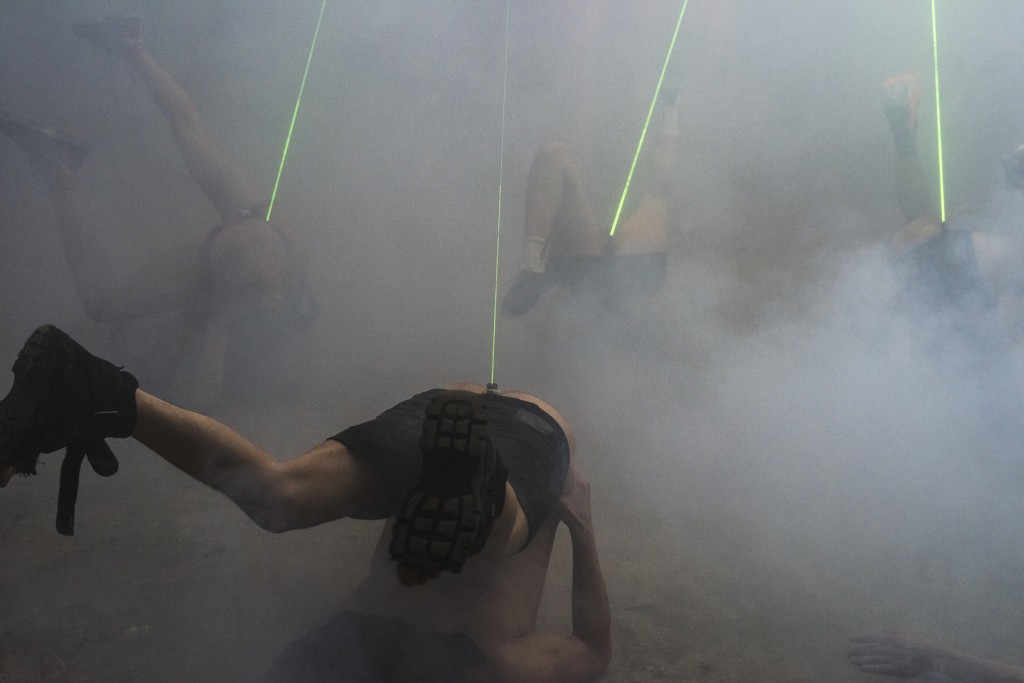
Young Boy Dancing Group at The Curves in the World”, Copenhagen, 2016 (Photo by David Stjernholm)
How do you decide on the content of each performance?
[We initially decided] that it should be just generated the day before. You think about what you’re gonna do and then say, “We’re gonna do it,” and everyone who is joining can propose things. Then we just see what fits and what feels good to everybody. But now, so many people have interest in the laser scenes, so sometimes people ask, “Hey, can we only have the laser scene?”
Is it important to you to have the lasers be a portion of the show, but not the entire thing?
This is also a thing that I think makes it kind of unique: there is no attachment. It’s okay to show it, or not to show it, to try new things, to use old things, or skip a scene. It can be custom made. For example in London, do you know the work Kiss by Tino Sehgal? Some of us have been [performing in] the piece by Tino Sehgal in some museums in Amsterdam, so people know the choreography—and they would just do this piece as a scene somehow.
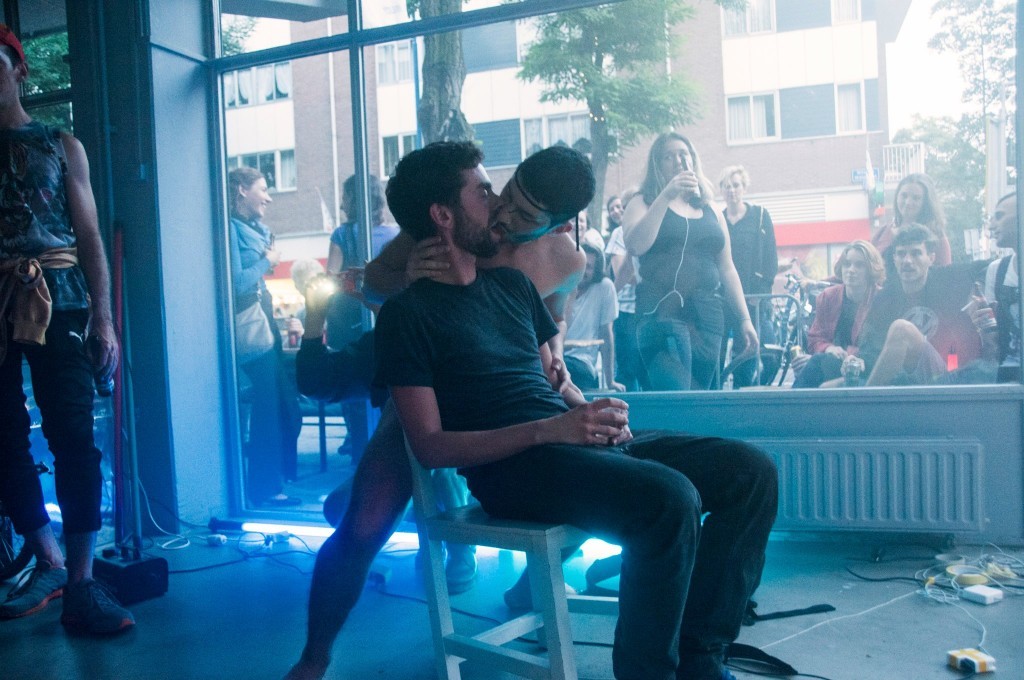
makeout4ultimate,Young Boy Dancing Group with Maria Metsalu, Manuel Scheiwiller, Vincent Riebeek, Nicolas Roses, Estéfano Romani and Juan Pablo Cámara at MAMA Rotterdam, 2014 (Photo via Young Boy Dancing Group)
How did you think of the idea for the lasers?
The laser thing comes from a woman in Ibiza. She’s a club performer; I don’t know her name. We once saw a GIF [of her]. [Editor’s note: Her name is Empress Stah] But it’s not clear if she has it in herself or if it’s just attached. We also say that the authorship is actually shared between all the people who are participating. So if someone joins, they can just take the stuff we do in the group further in their own work. We try to be very liberal with the topic of authorship.
Did it take some trial and error to find the perfect lasers?
We didn’t do research. We have different [lasers]. One of them you have to tape so they stay on, and it’s very annoying. So we found these ones that just stay on. But they’re all the same brightness. There’s this one guy who joined the show in Berlin one day and he had this huge laser. I saw him taking it out—we always put a condom over the laser to stay a bit clean—and his condom was just bloody. It was gross. I was like, “He’s going way too far, it’s too big!”
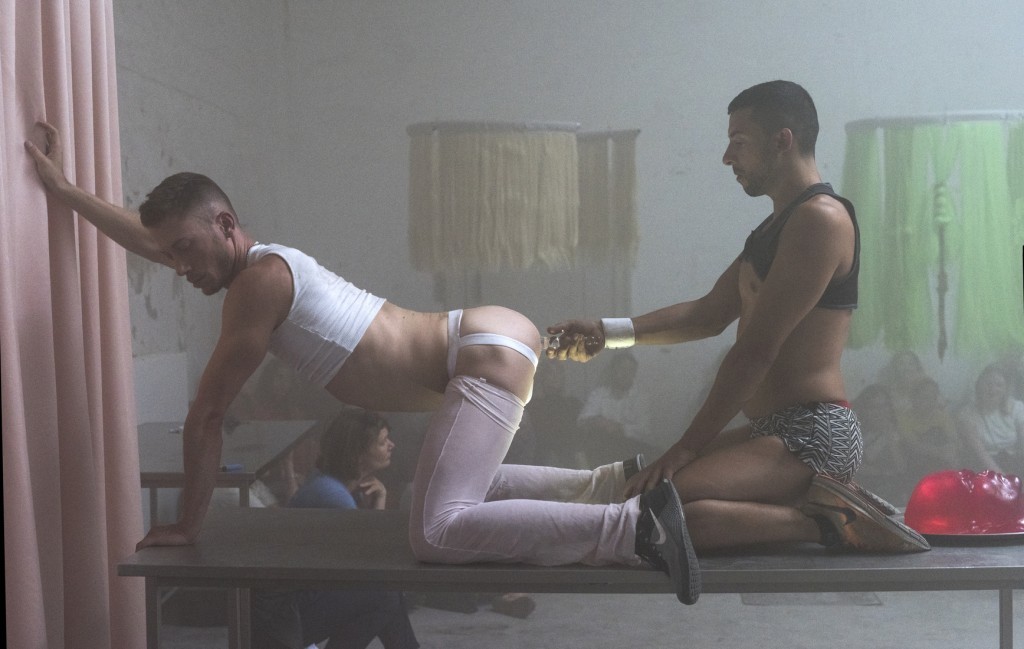
Young Boy Dancing Group at The Curves in the World”, Copenhagen, 2016 (Photo by David Stjernholm)
Are all of the performers OK with using them?
In the beginning, people were sometimes a bit doubting but now it’s OK. Sometimes it’s a bit painful. Everybody has to start at the same moment, and it’s like, “Let’s do it.” Also, one guy had hemorrhoids once and he couldn’t do it.
You’ve performed in art galleries, but also in nightlife environments like Chapter 10 and David Lynch’s club Silencio. Does one type of space feel more “right” for the project?
This is a good point. We did a show in Vienna in a club setting. There, someone, like a stranger, pushed Tommy’s laser back into his ass. And that was way too much. After that, we said, “Hey, we don’t want to perform in a party context.” Because how people value it is very different—sometimes people are watching it out of a drunken perspective. So we actually prefer to have it in art spaces. But, at Chapter Ten we had a very good experience.
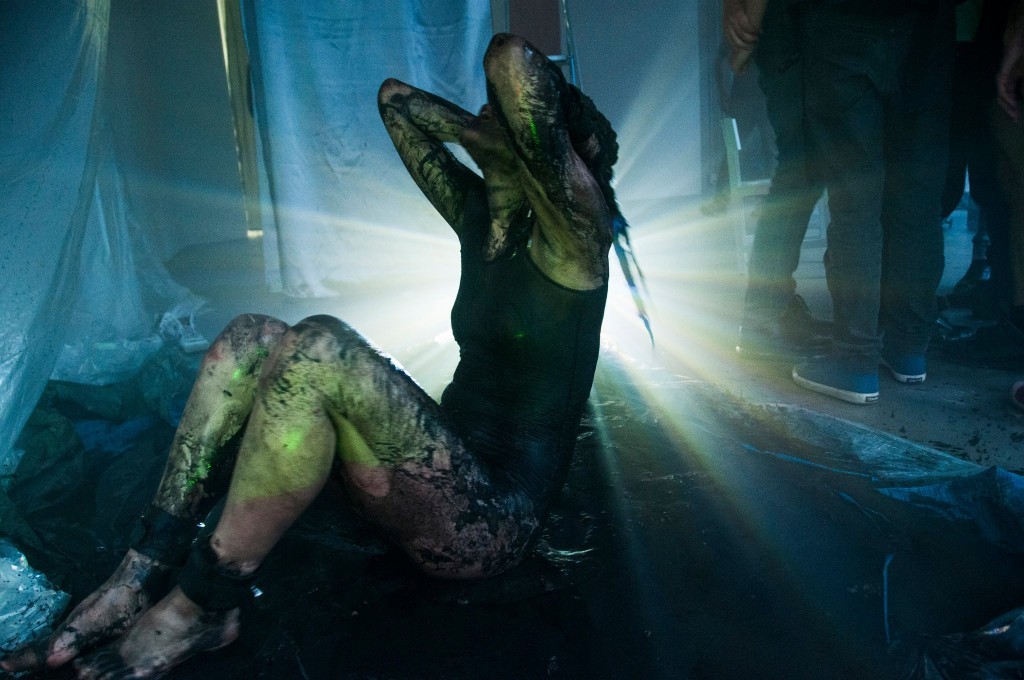
Young Boy Dancing Group at MAMA Rotterdam (Photo via Young Boy Dancing Group)
More
From VICE
-

Cole and Calvin, cousins, 2017. All photos courtesy of the artist and Dallas Contemporary. -

Collage by VICE -

-

(Photo by Christopher Polk/Getty Images for Clear Channel)
